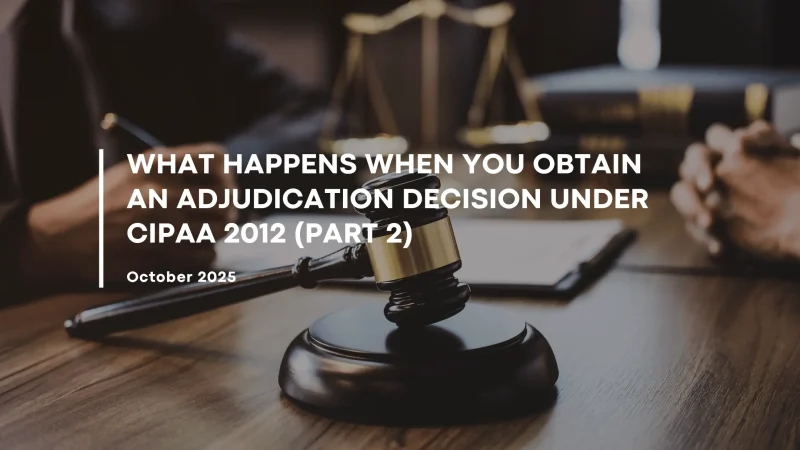In Malaysia, the right to terminate employment is not unfettered, even where the employment contract provides for termination with notice. It is a common but dangerous misconception among employers that they may dismiss employees without assigning any reason, so long as contractual notice is given. However, under Section 20 of the Industrial Relations Act 1967, a dismissal may be challenged if it is effected without just cause or excuse. This article analyses a recent decision on lawful termination
A. Introduction
The concept of “just cause or excuse” is a statutory prerequisite that forms the cornerstone of lawful termination. Section 20 of the Industrial Relations Act 1967 (“IRA”) provides recourse to employees who believe they have been dismissed unfairly. Once a representation under Section 20(1) of the IRA is made, the matter proceeds before the Industrial Court, where the inquiry is narrow but critical: Was the dismissal effected with just cause or excuse at the material time of termination?
The Federal Court of Malaysia in Maritime Intelligence Sdn Bhd v Tan Ah Gek [2021] 10 CLJ 663 (“Maritime Intelligence”) is the leading authority on the scope of the Industrial Court’s jurisdiction in
such matters. Employers should take careful note: a failure to articulate the grounds for dismissal in the termination letter or at the material time will likely be fatal to their defence.
B. Case Study
In a recent Industrial Court case of Andrew Jackson Lee v. Hunter Douglas Asia Holding BV (Award No. 151 of 2025) [Case No: 14/4-600/21], the Claimant was dismissed via a Letter of Termination.
Notably, the letter did not state a reason for the termination. The Company later attempted to explain, during the court proceedings, that the Company had opted to omit the reasons from the letter to “avoid embarrassing” the Claimant.
The Court rejected this explanation. Relying on Maritime Intelligence, the Court ruled that:
- The employer’s motives or justifications that were not contemporaneous with the dismissal decision could not be retroactively relied upon to justify the dismissal.
- The Industrial Court’s jurisdiction is strictly confined to the reasons operating in the mind of the employer at the time of dismissal.
- The explanation that reasons were omitted for the Claimant’s “dignity” was seen as an afterthought and not credible.
In short, the dismissal was ruled to have been executed without just cause or excuse, as no valid reason was provided at the time of dismissal.
C. Key Takeaways for Employers
1. The notion of a termination simpliciter, a concept where employers believe they can dismiss employees without assigning cause does not apply where the employee invokes Section 20 of
the IRA. This has been conclusively laid to rest by the Federal Court in Maritime Intelligence. An employer who fails to state the reason for dismissal at the material time does so at its own
peril. The Industrial Court cannot, and will not enter into a roving inquiry to salvage the dismissal based on ex post facto reasons.
2. The focus of the Industrial Court’s adjudication is what was operating in the mind of the employer at the exact point when the decision to dismiss was made.
3. Specific factors, events, or reasons must have been present in the employer’s mind prior to the decision to terminate the workman’s services. These form the basis for the dismissal. The
workman’s representation or complaint of dismissal without just cause or excuse under Section 20(1) of the IRA is made in response to these same reasons, factors, or events. It follows that
only these matters (those operating in the employer’s mind at the time of dismissal) can form the basis for assessment and adjudication by the Industrial Court under Section 20(3) of the
IRA.
4. If the employer cannot demonstrate that specific, cogent, and lawful reasons at the time of dismissal, the dismissal may be found to be unfair.
5. Subsequent discoveries, incidents, or performance issues not referenced in the dismissal process are unlikely to be admissible as justification unless they were demonstrably part of the
employer’s consideration at the time of termination.
6. Therefore, a termination letter is not merely an administrative formality. It is the primary documentary evidence that will form the basis of legal scrutiny. It should:
- Clearly articulate the grounds for dismissal.
- Be consistent with prior warnings or disciplinary action (if any).
- Be legally vetted if the circumstances are sensitive, high-risk, or involve a senior employee.
The absence of reasons in the letter creates a presumption of arbitrariness, which may be difficult to rebut in court.
7. Dismissal without due process may result in reinstatement or heavy compensation. These remedies can be financially and operationally disruptive, particularly for smaller companies or
where the dismissed employee held a senior role.
8. Given the legal constraints outlined above, employers should consult employment counsel at the earliest sign of potential dismissal. A misstep in process or documentation could nullify
months of preparatory HR work.
9. Pre-dismissal planning should include:
- A legally sound investigation process.
- Opportunity for the employee to be heard.
- Proper documentation and drafting of notices.
- Consideration of proportionality in the punishment.
© TSL Legal
This article is intended to provide general information only and does not constitute legal advice. It should not be used as a substitute for professional legal consultation. We recommend seeking legal advice before making any decisions based on the information available in this article. TSL Legal fully disclaims responsibility for any loss or damage which may result from relying on this article.
Further information
We regularly assist employers in navigating complex dismissal scenarios, conducting internal investigations, and managing disciplinary procedures in a manner that is legally defensible and
commercially sound.
If your organisation is facing a potential termination situation or a Section 20 representation, please contact the following representative for further assistance: Sebastian Lee Sheng Hong, Partner

